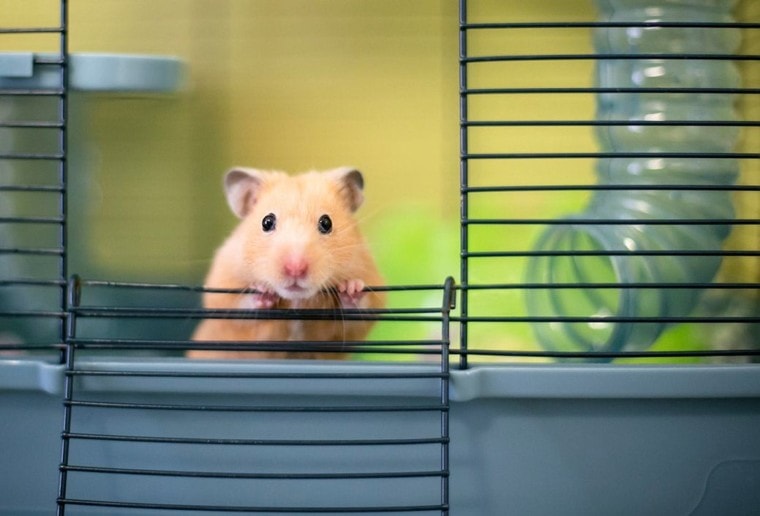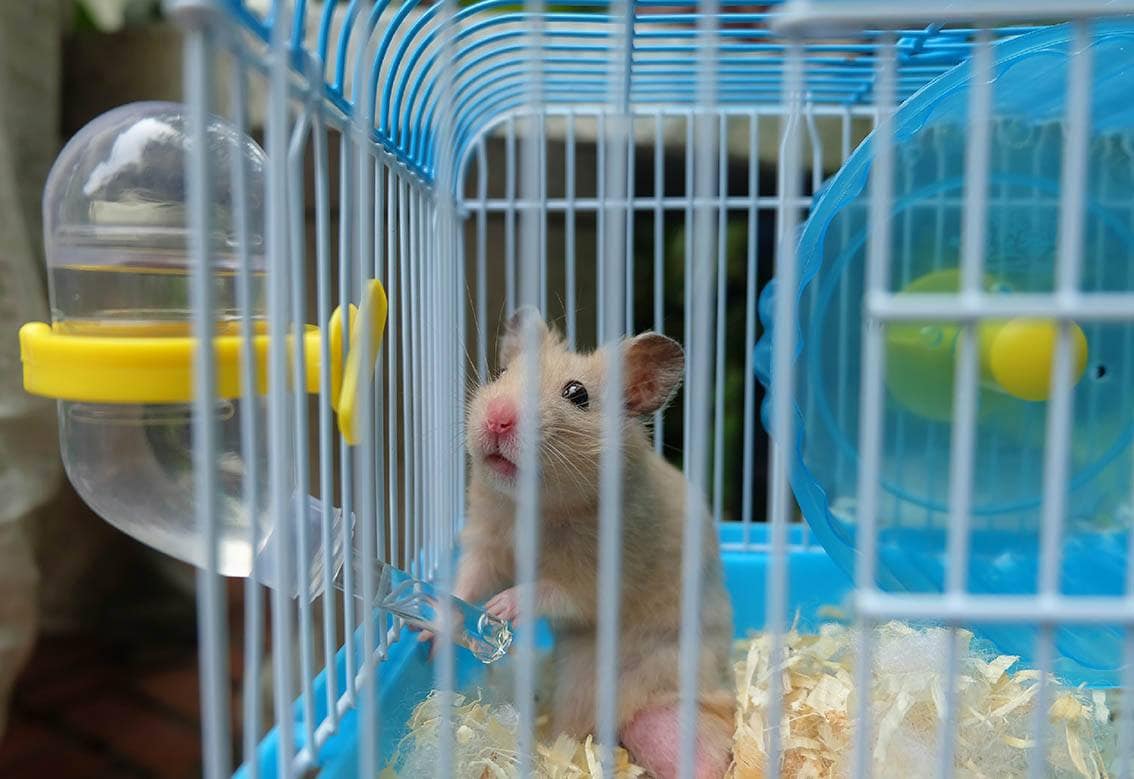
Syrian hamsters are one of the larger breeds of hamsters. They are certainly much larger than dwarf hamsters and, as such, they have different requirements when it comes to food, exercise, and cages. A cage that is suitable for a dwarf hamster, for example, could be too small or have too small compartments and features for your Syrian hamster.
You do need to ensure that the cage is the right size, although bigger is always better in terms of living space, and you can follow the guidelines below to help ensure that you do have enough room for your Syrian hamster to live, eat, sleep, and exercise.
What Do Syrian Hamsters Need?
Raising a Syrian hamster is something of an undertaking. Yes, they live in a cage, but if you want a friendly and loving pet, you will need to provide him with plenty of socialization and interaction. You will also need to ensure that he has a good diet, gets enough exercise, and that he has ample room in which to live and to run around.

Can Syrian Hamsters Live Together?
Syrian hamsters are solitary animals that prefer to live alone. You may see two or more sharing a cage in pet stores but these hamsters are usually young, during which time even Syrian hamsters can share without problems.
The 9 Tips for Choosing The Right Cage Size For Your Syrian Hamster
1. Measure The Available Space

Whether you intend to keep the cage on top of the cupboard in a bedroom, or the floor in the living room, you need to work out how much space you have. The hamster cage should be secure. It shouldn’t hang over the edge of any surfaces and it shouldn’t be at risk of getting knocked by doors being opened. A falling or knocked cage can become easily damaged and potentially even smashed. At the very least, a regular knocking on your nocturnal rodent’s living space will prevent them from getting the right amount or quality of sleep.
2. Minimum Cage Size
It is recommended that the minimum cage size for a Syrian hamster is 12” W x 12” D x 24” H. This is an absolute minimum, and if you can buy and fit a larger cage in your home, your hamster will appreciate it.
3. Check Your Budget
Other than space, you also need an appropriate budget. Cages can vary dramatically in cost, according to their size but also according to the materials they are made from, whether they are a wire cage or solid-sided cage, and whether they have additional features like built-in wheels or tunnels. Hamsters are considered a good animal to keep as a pet, and one of the reasons for this is that they are inexpensive to care for, but the cage is one of the biggest initial expenses, often costing more than the hamster itself.
4. Remember, Bigger Is Better
Your hamster needs space to sleep, somewhere to eat, and he will want plenty of room to run around and exercise. The above-mentioned specs are considered the minimum size of cage for this breed of hamster, but bigger is better, and even a few additional inches in one direction can make a big difference to the happiness of your little one.

5. Calculate Floor Space
The actual floor space your hamster has is important, and because your Syrian hamster may enjoy running around, there should be a decent amount of floor space in one area and without barriers to prevent running. Having two floors of 12” x 12” does not offer enough space for your Syrian hamster.
6. Check The Size Of Fittings
Cages designed for dwarf and other hamsters that are smaller than the Syrian are not suitable for your hamster. Not only are they likely to be too small but any fittings, such as tunnels or wheels, will be too narrow for your hamster to fit in. Despite this, they are likely to try, which means that they are also likely to get stuck and need your help pulling the cage apart.
7. Measure Bar Width
Similarly, you should check the width of the bars. As long as a cage is designed for hamster use, the bars should be far enough apart to accommodate a Syrian hamster, but the gap should be no more than a ½-inch between the bars. Ensure that doors are secure and, if necessary, add a small lock. Hamsters are quite remarkable at opening doors to escape.

8. Consider A Solid-Sided Cage
Wire cages with horizontal bars offer the opportunity to climb, and if your hamster is a chewer or has reason to chew the metal bars, it can cause injury and make him ill. A solid-sided cage prevents this but you will need to ensure that the plastic is chew proof and doesn’t have any exposed edges that can offer a starting position to chew from.
9. Ensure A Deep Tray For Bedding
Whether you choose a solid-sided or wire cage, the bottom layer needs to be made up of a substrate like sawdust and some bedding. This is more comfortable than a solid floor and it allows some burrowing that replicates your hamster’s burrowing needs in the wild. But it poses the question, how many inches of bedding does a Syrian hamster need?
Bedding, in this case, simply means the substrate that is placed on the bottom of the cage. It is used for burrowing, to make it easier to clean the cage, and to give your hamster a better living environment.
A lot of people offer 2-3 inches as being a minimum depth, but research indicates that this is some way short of an ideal depth for your Syrian. In fact, 6 inches should be considered an absolute minimum, and studies show that 15 inches of bedding enhances the welfare of hamsters, while hamsters living in 31 inches of bedding have notably higher body fat. In your home setup, 6 inches should be achievable, but the greater the depth of bedding you can provide, the better, so ensure that your new cage has ample room at the bottom.
Why Does My Syrian Hamster Bite The Cage?

Your Syrian hamster biting the bars of his cage may indicate one of several potential issues.
- He may be bored, chewing the cage for something to do.
- He may not have enough space and is chewing the bars in the hope of getting to a more spacious area.
- It could be a sign that his teeth are overgrown and need cutting.
In any case, chewing the metal bars can cause damage to the teeth and lead to them becoming misaligned or broken. If they cause damage to the bar, this can cut or cause abrasive damage to your hamster’s cheek or mouth, too, and with enough time and gnawing, your Syrian hamster could chew through the cage bars and fashion an escape.
Final Thoughts
Syrian hamsters are larger than Dwarf hamsters and have their own requirements. Chief among these requirements is the need for a larger cage: one that does not have slim tunnels and too-small wheels. You should provide a minimum space of 12” W x 12” D x 24” H, but any additional space you can provide will be beneficial to your hamster’s wellbeing and happiness.
Featured Image: Mary Swift, Shutterstock








